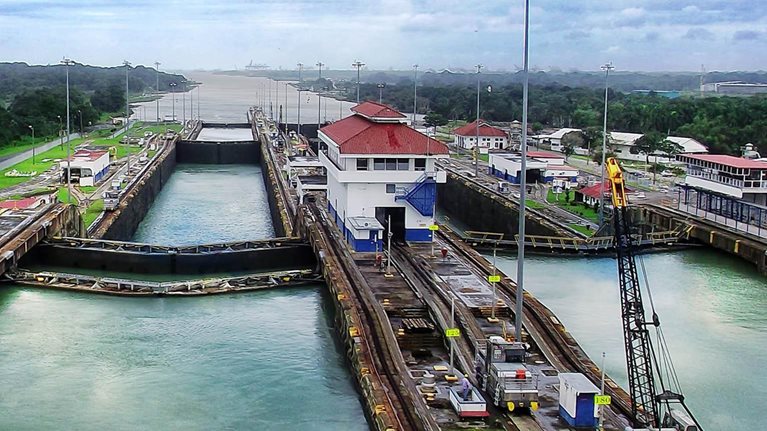Crossrail is Europe’s largest infrastructure project. The £14.8 billion rail line will link four major London economic centers: Canary Wharf, the financial district, the West End, and Heathrow Airport. It will be integrated with other transport services and increase central London’s rail capacity by 10 percent. Scheduled to open in late 2018, Crossrail is running on time and on budget. In short, it is on track to success. One reason for that is Innovate 18, our program to identify and implement new ideas.
The construction industry has historically been slow to pursue innovation and sometimes seems reluctant to encourage it. There are structural issues as well. The industry is fractured, and its procurement processes seldom include incentives for innovation and R&D generally, which are limited by its tight profit margins. Finally, companies tend to see projects not as part of a pipeline but as unique; this mind-set reduces their ability to transfer innovations from one project to another. Many industries invest 5 percent or more of their revenues in R&D; for British construction, that figure is only about 0.5 percent.
However, there are hints of change. During the construction of Heathrow’s Terminal 5 in 2008 and of London’s 2012 Olympic infrastructure, the clients promoted the idea of creating a more systematic approach to innovation. Because the client was talking, the construction industry listened. Crossrail was in a good position to learn from these experiences—its program director, Simon Wright, worked on the London 2012 games and has also been a senior executive at Network Rail, which maintains and upgrades the national rail infrastructure. (I myself was the program director for Heathrow T5.)
As part of a relentless focus on innovation, we explicitly sought to build on the practices demonstrated in these projects. Working with London’s Imperial College, we defined an innovation strategy and processes for implementing it—the first step in what became Innovate 18, the Crossrail innovation program. Its introduction sent a powerful message that it was OK to generate new ideas, something that is not always typical of major construction projects.

Voices on Infrastructure, Number 3
At the same time, we took practical steps to engage the most important members of Crossrail’s supply chain. We wrote to these chief executives and set out our commitment to innovation and to sharing ideas. We then asked them to pay £25,000 into an innovation fund—and pledged to match each contribution. All our major contractors joined, creating a pool of £750,000. In the context of a £14.8 billion project, this is a modest sum. But by putting skin in the game, we and our suppliers demonstrated our mutual commitment to promoting innovation.
We encouraged our contracting partners to share their intellectual property and to release ideas buried deep within their supply chains, often from small and midsize enterprises. Initially, we asked the contractors to trust that they would benefit from doing so. In this sense, taking part in the program was an act of faith—there were few precedents. But from the start, people were enthusiastic; innovative ideas flowed into the portal. Many early ones focused on safety, but soon people saw the opportunity, and significant innovations began to be submitted in a variety of other fields as well.
Early examples included a first in the United Kingdom: the use of telescopic excavators, which delivered significant financial savings. Also, the first digital ideas began to appear; they were to bring more significant savings later. These early successes were enough to encourage the supply chain, and with innovation rates staying high, confidence in the program was maintained.
By early 2013, Crossrail’s four-person innovation team, which reports to the strategic-projects director, had developed a conceptual model of collaboration, culture, and capabilities. We identified four innovation themes: health and safety, efficiency, digital–physical integration, and sustainable solutions. This approach allowed us to concentrate our efforts and therefore to realize opportunities that we would otherwise have found more difficult.
- Collaboration. The innovation team worked with every project in the Crossrail program to establish a network of innovation champions and then helped them set up forums and workshops to support grass-roots efforts.
- Culture. We called our philosophy “pinching with pride.” In British English, “pinching” is a slang term for stealing. In the context of Innovate 18, it meant sharing and openness—a willingness to show and tell ideas. The sense that building Crossrail successfully was a collective activity began to pervade our work, in part because all the innovation efforts explicitly encouraged a collaborative approach.
- Capabilities. For the innovation program to work, we needed a way to create, share, and challenge ideas and then to govern their development. So the innovation team set up a database where participants could upload and discuss suggestions. A working group and a board decided which ideas to finance and in what order.
Launched in the summer of 2013, the program received an immediate boost from new university graduates joining Crossrail. Within weeks, the spark had caught; ideas began to flow into the Innovate 18 portal. At its peak, more than 1,000 people from every corner of Crossrail were accessing the website and sharing ideas. The database now includes more than 800 of them, more than 300 have been developed, and more than 100 shared among projects and contractors.

Urban mobility at a tipping point
These innovations have ranged from basic safety features to new types of engineering facilities, new materials, improved sensor systems, and digital enhancements. The total cost of the program (for Heathrow, contractors, and other partners) was about £3 million; we estimate that the benefits already amount to three times that figure, which will probably double by the time we are done. And we believe that there are also intangible benefits, in the form of improved reputation and collaboration.
The intangible benefits of collaboration, performance, and reputation are significant to a program of Crossrail’s complexity and scale. Our experience of the Innovate 18 program was that it transcended contract and other boundaries and encouraged the collective effort to succeed, and that in turn helped to improve our performance and collaboration between colleagues.
One important lesson of the Crossrail experience is that clients need to develop business and commercial models that encourage the supply chain to participate—for example, through contracts that share the benefits of innovation among the parties. If clients take the lead in this way, the construction industry might begin to invest more to make innovation the norm rather than the exception. There is precedent for this. In both the automotive and aerospace sectors, companies have collaborated for years to focus scarce resources on strategic priorities, such as developing engines, so they can share costs and risks and compete more effectively.
The Crossrail innovation program will not end when the ribbon is cut. The Thames Tideway project has adapted our model, and we are sharing our database with other national infrastructure efforts. Completing capital programs more efficiently across the entire life cycle not only adds value but also builds public confidence—and that may be the most important innovation of all.


